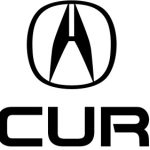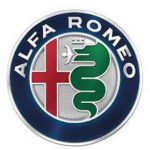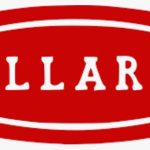Abarth 124 spider. Carlo Abarth was the sporting director of the Cisitalia racing platoon starting in 1947. The ensuing time, the manufacturer folded, and author Piero Dusio flew to Argentina.
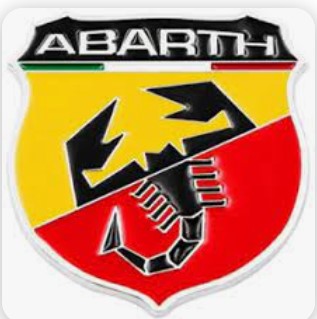
Abarth, funded by Armando Scagliarini, took over Cisitalia’s means, and on 31 March 1949,
Abarth &C. was innovated in Bologna. Carlo’s astrological sign, Scorpio, was chosen as the company totem.
From the Cisitalia liquidation, Abarth attained five 204 sports buses ( two complete Spiders and three untreated), a D46 single-seater, and colorful reserves. The Cisitalia 204s were incontinently rechristened Abarth Cisitalia 204A. Abarth progressed to make and fight a series of sports buses developed from these last Cisitalia buses. In addition to Guido Scagliarini, the” Squadra Abarth” contending platoon lined up famed motorists, including Tazio Nuvolari, Franco Cortese, and Piero Taruffi.
especially, Tazio Nuvolari made his last appearance in racing at the wheel of an Abarth 204A, winning
it is class in the Palermo – Monte Pellegrino hillclimb on 10 April 1950. Alongside racing, the company’s main exertion was producing and dealing accessories and performance corridors for Fiat, Lancia, Cisitalia, and Simca buses, like bay manifolds and silencers.
On 9 April 1951, the company’s headquarters were moved to Turin; Abarth began his well-known association with Fiat in 1952 when the company erected the Abarth 1500 Biposto on Fiat mechanicals.
In 1957, Abarth entered a deal with Fiat whereby they were paid direct freights for successful competition homestretches. Abarth consequently went on to enter their buses in innumerous hill climbing and sports-auto racing events across the world, substantially in classes from 850 to 2000 cc, contending with Porsche 904 and Ferrari Dino in the advanced situations. Since they were paid based on the number of results, Abarth entered their buses in every conceivable class and in countries across the entire
world. Hans Herrmann was a plant motorist from 1962 until 1965, winning the 500 km Nürburgring in 1963 with Teddy Pilette.
Abarth promised Johann Abt that he could fight a plant auto for free if he won all the races he entered. Abt nearly succeeded; of the 30 races he entered, Abt won 29 and finished second formerly. Abt latterly innovated Abt Sportsline.
Abarth produced high-performance exhaust pipes, diversifying into tuning accouterments for road vehicles, mainly for Fiat. A racing exhaust was produced for the 1950s Lambretta models” D” and” LD” The foremost Abarth LD exhausts are now precious collectors’ details. replications are available, which carry the Abarth name; how Fiat feels about this isn’t known. Lambretta indeed held several 125 cc motorcycle land speed records during the 1950s due incompletely to the exhaust that Abarth developed for them.
In 1958, Abarth developed the Abarth Alfa Romeo 1000 in collaboration with the Milanese manufacturer. They transferred an architect, Mario Colucci, to oversee the process. Abarth was impressed with his skill, and while the bus remained a one-off, Colucci was given the position of Abarth’s
Technical Director in 1960. Colucci’s first design was an amid-engined, tubular framed roadster using the 750 machine called the Abarth Spider Sport. This bus had an unfortunate gestation period and noway attained important success in competition, while Abarth himself favored the hamper-machine layout and kept offering both types The Spider Sport series was also erected with 700 and 1000 cc displacements, while numerous late samples were fitted with 1300 cc machines of Simca origins. Colucci’s coming design, the Group 4 1000 SP, was much more successful and spawned a range of mixed-engined, tubular-framed, fibreglass-bodied sports prototypes.
Abarth also helped make sports or contending motorcars with Porsche and Simca.

1971: Fiat takeover
Carlo ended Abarth to Fiat on 31 July 1971. The accession wasn’t made public until 15 October.
As Fiat wasn’t interested in the Reparto Corse contending operations, these were taken over by Enzo Osella. Osella attained buses, reserves, technicians, and motorists( amongst them Arturo Merzario), and continued the racing exertion, launching the Osella racing platoon. therefore ended for Abarth the days of sports prototype and hill climb racing.
Under Fiat power, Abarth came the Fiat Group’s racing department, managed by machine developer Aurelio Lampredi. Abarth prepared Fiat’s rally buses, including the Fiat 124 Abarth Rally and 131 Abarth. In December 1977, in advance of the 1978 racing season, the beforehand contending Abarth and Squadra Corse Lancia plant racing operations were intermingled by Fiat into a single reality named EASA( Ente perl’Attività Sportiva Automobilistica, Organization for Car Sports Racing Conditioning).
Cesare Fiorio( preliminarily in charge of the Lancia rally platoon) was appointed director, while Daniele Audetto was the sporting director; the EASA headquarters were set up in Abarth’s Corso Marche( Turin) services. The combined racing department developed the Lancia Beta Montecarlo Turbo Group 5 racing auto which won the 1980 World Championship for Makes and the 1981 World Abidance Championship of Makes. It also created the Lancia Rally 037 Group B rally auto, which won Lancia the 1983 World Manufacturers’ Championship).
On 1 October 1981, Abarth &C. desisted live and was replaced by Fiat Auto Gestione Sportiva, a division of the parent company specialized in the operation of racing programs that would remain in operation through the end of 1999, when it changed to Fiat Auto CorseS.p.A.
Some marketable models erected by Fiat or its accessories Lancia and Autobianchi were co-branded Abarth, including the Autobianchi A112 Abarth, a featherlight and affordable” boy racer”. The A112 Abarth was introduced with a 58 hp machine, soon followed by a 70 hp one, and a specific” A112 Abarth jewel” was run from 1977 to 1984.
In the 1980s, the Abarth name was substantially used to mark performance buses, similar to the Fiat Ritmo Abarth125/130 TC.
In the 2000s, Fiat used the Abarth brand to designate a trim/ model position, as in the Fiat Stilo Abarth.
2007 Rebirth of Abarth &C.S.p.A.
On 1 February 2007, Abarth was established as an independent unit with the launch of the current company, Abarth &C.S.p.A., controlled 100 by Fiat Group motorcarsS.p.A., the attachment of FiatS.p.A. dealing with the product and selling of passenger buses and light marketable vehicles.
The foremost models were the Abarth Grande Punto and the Abarth Grande Punto S2000. The brand is grounded in the Officine 83, part of the old Mirafiori engineering plant. The CEO of 2022 is Olivier François.
In 2015, Abarth’s parent company was renamed FCAItalyS.p.A., reflecting the incorporation of FiatS.p.A. into Fiat Chrysler motorcars that took place in the previous months.
Yamaha XSR900 Abarth
In 2017, Abarth banded with Yamaha to produce a limited-edition motorcycle, the” Sport Heritage café racer special”. Named the XSR900 Abarth it was grounded on the 847 cc inline- triadic standard neo-retro Yamaha XSR900.
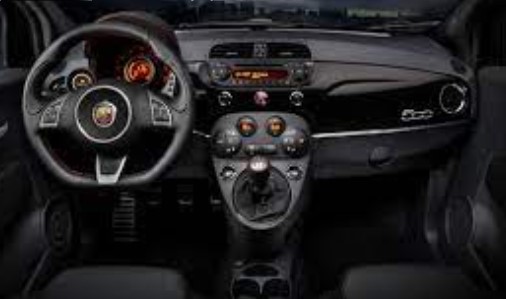
Cars produced by Abarth
Fiat-Abarth 500
Fiat-Abarth 750
Fiat-Abarth 1000 TC
Fiat-Abarth 850 TC
Abarth 1100 Scorpione Spider
Abarth 1500 Biposto
Abarth Simca 2000 – coupé
Abarth 204A
Abarth 205A Berlinetta
Alfa Romeo Abarth 2000 Coupe
Abarth 207A Spyder Corsa Boano
Abarth 208A Spyder Boano
Abarth 209A Coupé Boano
Abarth 210A Spyder Boano
Porsche 356 B Carrera GTL Abarth
Abarth Simca 1300 GT
Fiat-Abarth OT1000
Fiat-Abarth 1000 OTR Berlinetta Bertone
Fiat-Abarth OT1600
Fiat-Abarth OT 2000 Competition Coupé
Fiat-Abarth 750 Zagato
Fiat-Abarth 2200
Fiat-Abarth 750 Spider Allemano
Fiat-Abarth 2400
Fiat Abarth 1000 TCR Berlina
Abarth 215A Coupé Bertone
Abarth 216A Spyder Bertone
Fiat Abarth 1000 SP
Autobianchi A112 Abarth
Fiat-Abarth 595 SS
Fiat-Abarth 695 SS
Abarth OT 1300
Abarth Monomille
Abarth Grand Prix/Scorpione
Abarth 3000 Prototipo
Fiat Ritmo 125/130 TC Abarth
Fiat Abarth 124 Rally
Fiat 131 Abarth Rally
Lancia Rally 037
Cars nay produced by Abarth then with Abarth badges
Fiat Bravo GT/HGT (Abarth)
Fiat Stilo 2.4 Abarth
Fiat Punto HGT (Abarth)
Fiat Cinquecento Sporting (Abarth)
Fiat Seicento Sporting (Abarth)
Cars produced under Abarth & C. S.p.A. (2007–)
Abarth 500 / Fiat 500 Abarth (NA)
Abarth 595
Abarth 695
Abarth Grande Punto
Abarth Punto Evo
Fiat 124 Spider Abarth (NA) / Abarth 124 Spider
Fiat Abarth Punto
Abarth Pulse
Abarth Fastback
Cars produced with Abarth tuning
Fiat 500 TwinAir byAbarth
Fiat 500S by Abarth
Fiat Avventura Powered by Abarth
Fiat Urban Cross Powered by Abarth
Fiat Fastback Limited Edition Powered by Abarth
Cars produced by another factor with involvement from Abarth
Lancia Delta S4 for Group B – Helped to engineer the engine which utilized a supercharger and turbocharger.
Cars produced under Fiat Corse – AND Technology named Abarth
Fiat Punto Abarth (rally version only)
Fiat Cinquecento 900 Trofeo kit car (teams had to build up their own rally car from Fiat N Technology-derived Abarth racing parts)
Fiat Cinquecento Sporting 1.1 Rally car
Fiat Seicento Sporting 1.1 Rally car
another car brand


